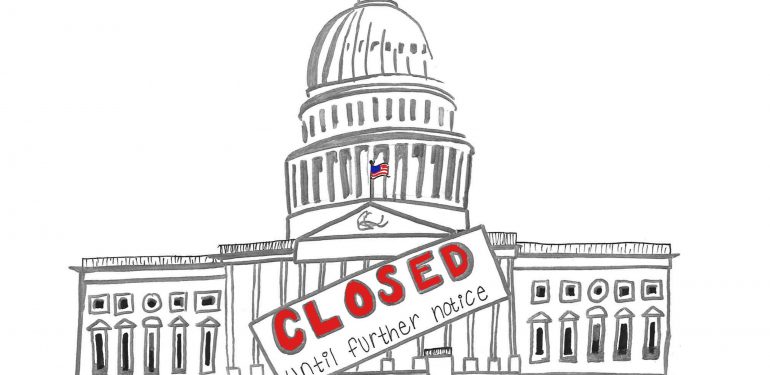DURING PROLONGED SHUTDOWNS, EMPLOYEES ARE FURLOUGHED
By Alexander Shedd, News Assistant Editor
On Jan. 19, the government shut down for the first time since the shutdown of 2013, which lasted for more than two weeks. The shutdown occurred due to a lack of agreement in the Senate over a budget bill that included stipulations to give recipients of the Deferred Action for Children Arrivals program (“DACA”) a pathway to legal citizenship.The shutdown ended three days later on Jan. 22.
It’s unclear whether or not the Department of Education was affected by the most recent shutdown, or will be affected by future shutdowns. However, during the 2013 shutdown, the department was heavily impeded.
According to a Washington Post article published by Valerie Strauss in 2013, the Department of Education has a contingency rule, which took effect during the 2013 shutdown and calls for 94 percent of department employees to be placed on furlough, indefinite leave without pay, after a week of shutdown. The text of the rule states that the extreme measures are to protect the cash flow going to public schools around the country.
The suspension of these employees can lead to numerous problems around the department. Federal financial aid and Pell Grant payments can be delayed. Public school advancement programs such as Race to the Top and No Child Left Behind can be hindered due to loss of staffers. Essentially, most of the bureaucracy involved in running the public school system on all levels is suspended during a prolonged government shutdown.
According to a Time Magazine article by Laurence Arnold on Jan. 18, if a shutdown continues for more than a few days, it can also affect the “processing of applications for passports and visas; new enrollments for experimental treatments under the National Institutes for Health; and the maintenance of U.S. government websites, including ones used by businesses and researchers.”
For now, the government is “open” until the next budget vote on Feb. 8. However, should another shutdown occur, it could affect public education.
Graphic by Ally McAlpine



